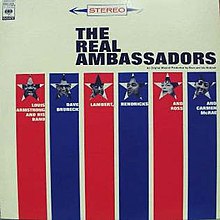
David Warren Brubeck was an American jazz pianist and composer. Often regarded as a foremost exponent of cool jazz, Brubeck's work is characterized by unusual time signatures and superimposing contrasting rhythms, meters, and tonalities.

The Newport Jazz Festival is an annual American multi-day jazz music festival held every summer in Newport, Rhode Island. Elaine Lorillard established the festival in 1954, and she and husband Louis Lorillard financed it for many years. They hired George Wein to organize the first festival and bring jazz to Rhode Island.
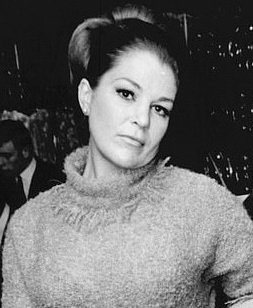
Annie Ross was a British-American singer and actress, best known as a member of the influential jazz vocal trio Lambert, Hendricks & Ross. She pioneered the vocalese style of jazz singing, with a style described by critic Dave Gelly as "a kind of dreamy watchfulness that is a definition of 1950s hip." In 2010, she was named a Jazz Master by the National Endowment for the Arts.

At Carnegie Hall is a jazz live album by the Dave Brubeck Quartet. It was recorded at the famed Carnegie Hall in New York City on Friday, February 22, 1963. Critic Thom Jurek described it as "one of the great live jazz albums of the 1960s". Critic Jim Santella wrote, "This is timeless music from a classic ensemble. Goosebumps are guaranteed."

John Carl Hendricks, known professionally as Jon Hendricks, was an American jazz lyricist and singer. He is one of the originators of vocalese, which adds lyrics to existing instrumental songs and replaces many instruments with vocalists, such as the big-band arrangements of Duke Ellington and Count Basie. He is considered one of the best practitioners of scat singing, which involves vocal jazz soloing. Jazz critic and historian Leonard Feather called him the "Poet Laureate of Jazz", while Time dubbed him the "James Joyce of Jive". Al Jarreau called him "pound-for-pound the best jazz singer on the planet—maybe that's ever been".
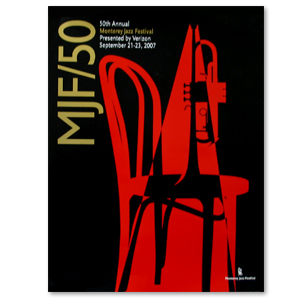
The Monterey Jazz Festival is an annual music festival that takes place in Monterey, California, United States. It debuted on October 3, 1958, championed by Dave Brubeck and co-founded by jazz and popular music critic Ralph J. Gleason and jazz disc jockey Jimmy Lyons.
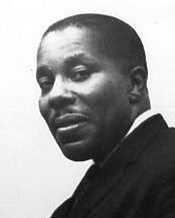
Eugene Joseph Wright was an American jazz bassist who was a member of the Dave Brubeck Quartet.

Carmen Mercedes McRae was an American jazz singer. She is considered one of the most influential jazz vocalists of the 20th century and is remembered for her behind-the-beat phrasing and ironic interpretation of lyrics.

George Mesrop Avakian was an American record producer, artist manager, writer, educator and executive. Best known for his work from 1939 to the early 1960s at Decca Records, Columbia Records, World Pacific Records, Warner Bros. Records, and RCA Records, he was a major force in the expansion and development of the U.S. recording industry. Avakian functioned as an independent producer and manager from the 1960s to the early 2000s and worked with artists such as Louis Armstrong, Miles Davis, Duke Ellington, Benny Goodman, Dave Brubeck, Eddie Condon, Keith Jarrett, Erroll Garner, Buck Clayton, Sonny Rollins, Paul Desmond, Edith Piaf, Bob Newhart, Johnny Mathis, John Cage, Alan Hovhaness, Ravi Shankar, and many other notable jazz musicians and composers.
Lambert, Hendricks & Ross were an American vocalese trio formed by jazz vocalists Dave Lambert, Jon Hendricks and Annie Ross. From 1962 to 1964, Ross was replaced by vocalist Yolande Bavan.

William Osborne Kyle was an American jazz pianist. He is perhaps best known as an accompanist.
Yolande Bavan is a Sri Lankan singer and actress.

Havin' a Ball at the Village Gate is the last album by the reformed jazz vocal group Lambert, Hendricks & Bavan, of Dave Lambert and Jon Hendricks with Yolande Bavan. The group was formed after Annie Ross left the vocal group in 1962. The album was recorded live at the Village Gate club in New York City on December 20 and 21, 1963.
Byron Stripling is a jazz trumpeter who has been a member of the Count Basie Orchestra.
Basin Street East was a notable nightclub of the 1960s in New York City. Several live albums were recorded there, including Peggy Lee's Basin Street East Proudly Presents Miss Peggy Lee (1961), and Billy Eckstine's At Basin St. East (1961).

Jazz ambassadors is the name often given to jazz musicians who were sponsored by the US State Department to tour Eastern Europe, the Middle East, central and southern Asia and Africa as part of cultural diplomacy initiatives to promote American values globally.
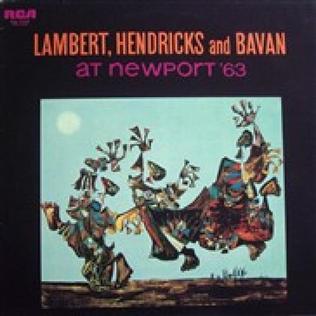
At Newport '63 is an album by the jazz vocalese group Lambert, Hendricks & Bavan recorded at the 1963 Newport Jazz Festival. The album features the group who had re-formed in 1963 featuring Dave Lambert and Jon Hendricks, with Yolande Bavan replacing Annie Ross who had left the group in 1962.

Recorded "Live" at Basin Street East is an album by the jazz vocalese group Lambert, Hendricks & Bavan recorded at the New York City nightclub Basin Street East. The album features the group who had re-formed in 1963 featuring Dave Lambert and Jon Hendricks, with Yolande Bavan replacing Annie Ross who had left the group in 1962.

Brubeck in Amsterdam is a 1962 live album by Dave Brubeck and his quartet recorded on 3 December at the Concertgebouw in Amsterdam, though unreleased until 1969. Six of the tracks are from Brubeck's musical The Real Ambassadors.
Penny Marie Von Eschen is an American historian and Professor of History and William R. Kenan, Jr. Professor of American Studies at the University of Virginia. She is known for her works on American and African-American history, American diplomacy, the history of music, and their connections with decolonization.
